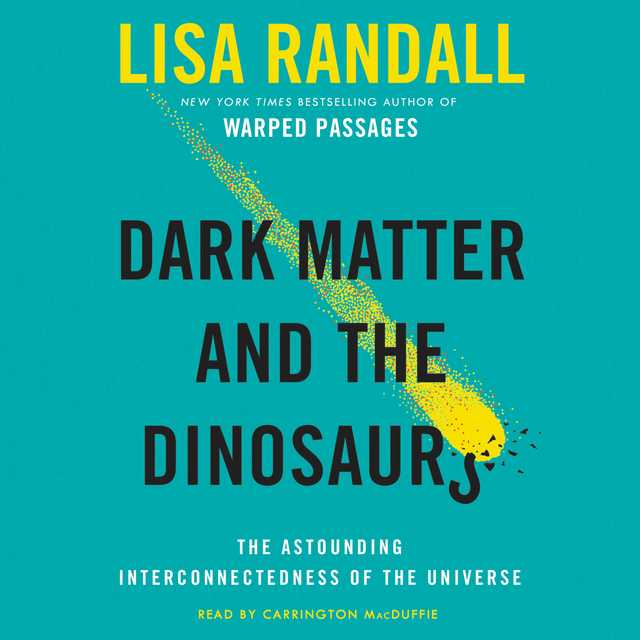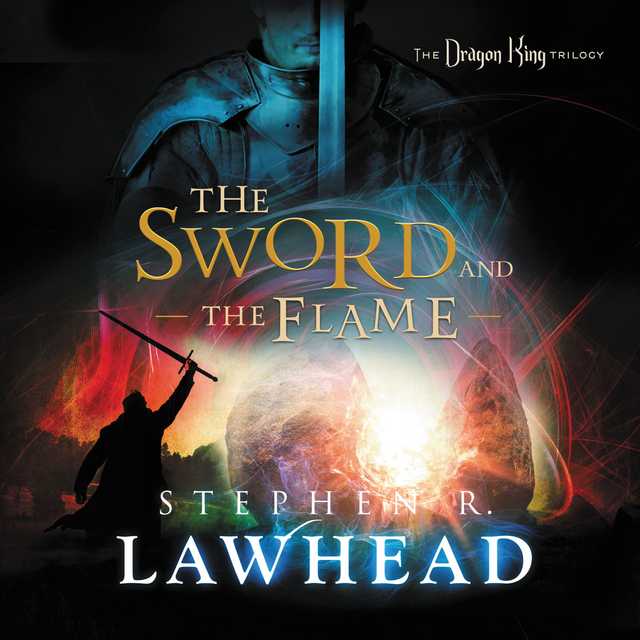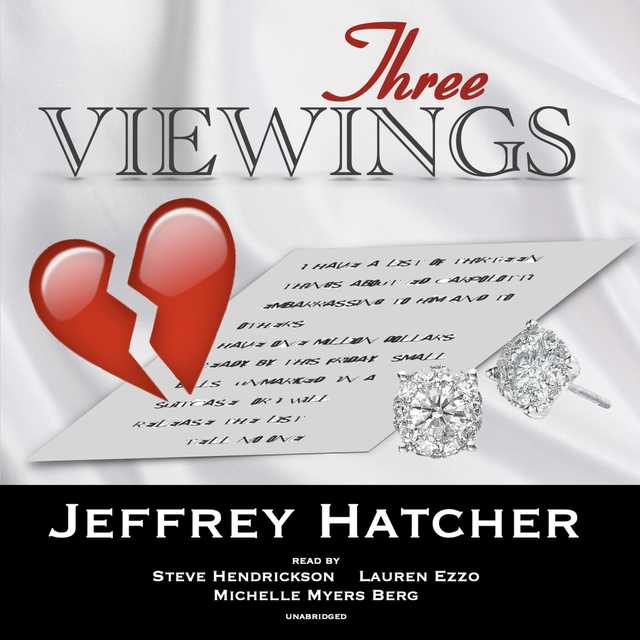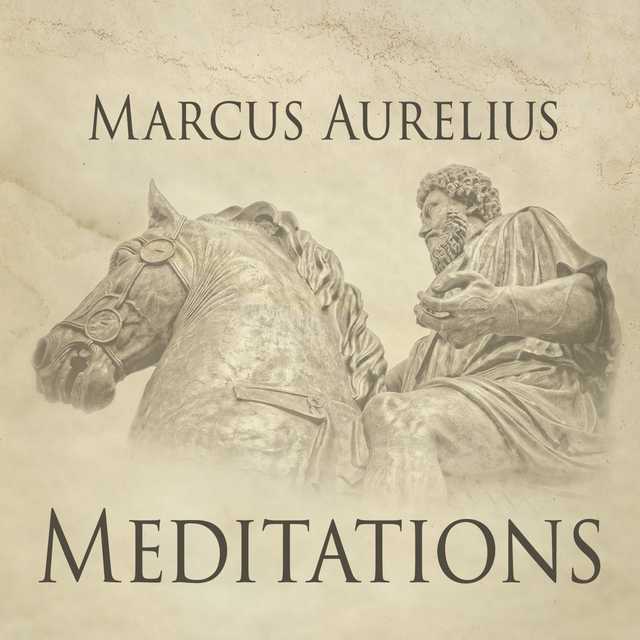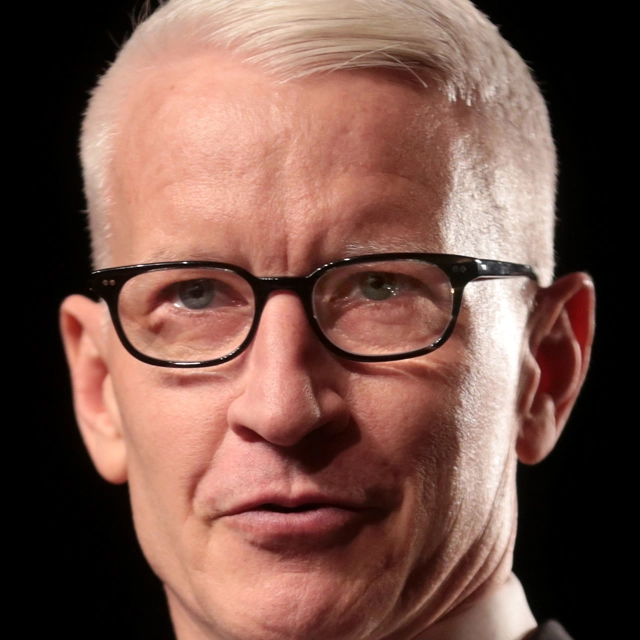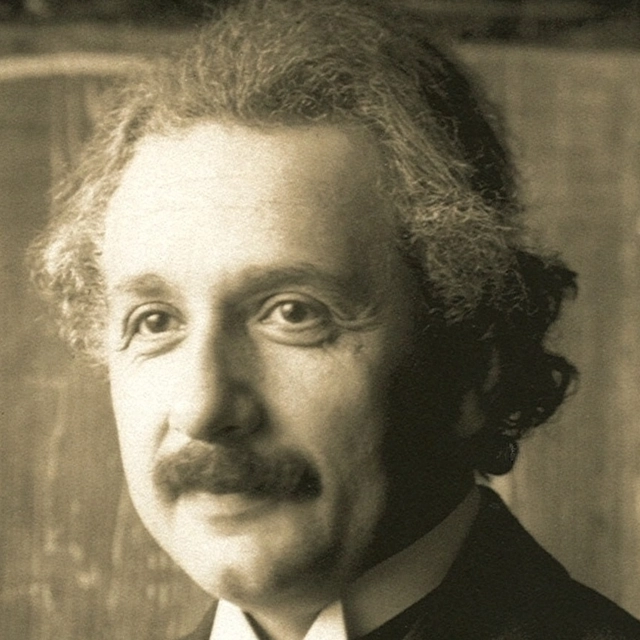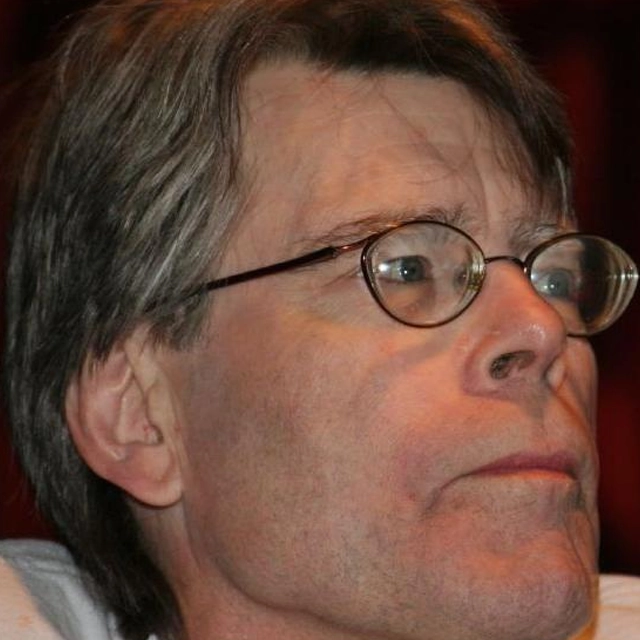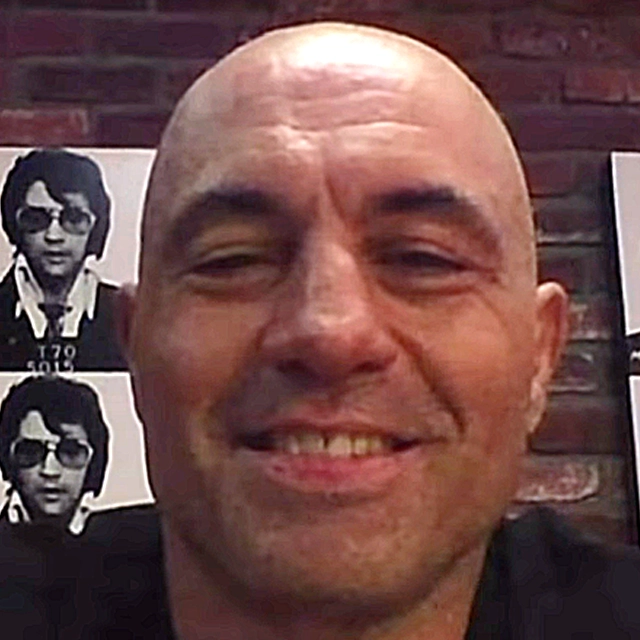Dark Matter and the Dinosaurs Audiobook Summary
In this brilliant exploration of our cosmic environment, the renowned particle physicist and New York Times bestselling author of Warped Passages and Knocking on Heaven’s Door uses her research into dark matter to illuminate the startling connections between the furthest reaches of space and life here on Earth.
Sixty-six million years ago, an object the size of a city descended from space to crash into Earth, creating a devastating cataclysm that killed off the dinosaurs, along with three-quarters of the other species on the planet. What was its origin? In Dark Matter and the Dinosaurs, Lisa Randall proposes it was a comet that was dislodged from its orbit as the Solar System passed through a disk of dark matter embedded in the Milky Way. In a sense, it might have been dark matter that killed the dinosaurs.
Working through the background and consequences of this proposal, Randall shares with us the latest findings–established and speculative–regarding the nature and role of dark matter and the origin of the Universe, our galaxy, our Solar System, and life, along with the process by which scientists explore new concepts. In Dark Matter and the Dinosaurs, Randall tells a breathtaking story that weaves together the cosmos’ history and our own, illuminating the deep relationships that are critical to our world and the astonishing beauty inherent in the most familiar things.
Other Top Audiobooks
Dark Matter and the Dinosaurs Audiobook Narrator
Carrington MacDuffie is the narrator of Dark Matter and the Dinosaurs audiobook that was written by Lisa Randall
Lisa Randall studies theoretical particle physics and cosmology at Harvard University, where she is Frank B. Baird, Jr., Professor of Science. A member of the National Academy of Sciences, the American Philosophical Society, and the American Academy of Arts and Sciences, she is the recipient of many awards and honorary degrees. Professor Randall was included in Time magazine's "100 Most Influential People" of 2007 and was among Esquire magazine's "75 Most Influential People of the 21st Century." Professor Randall's two books, Warped Passages (2005) and Knocking on Heaven's Door (2011) were New York Times bestsellers and 100 Notable Books. Her stand-alone e-book, Higgs Discovery: The Power of Empty Space, was published in 2012.
About the Author(s) of Dark Matter and the Dinosaurs
Lisa Randall is the author of Dark Matter and the Dinosaurs
More From the Same
- Author : Lisa Randall
- Warped Passages
- Knocking on Heaven’s Door
- Publisher : HarperAudio
- Abraham
- American Gods [TV Tie-In]
- Dead Ringer
- House of Sand and Fog
- Prey
Dark Matter and the Dinosaurs Full Details
| Narrator | Carrington MacDuffie |
| Length | 12 hours 32 minutes |
| Author | Lisa Randall |
| Category | |
| Publisher | HarperAudio |
| Release date | October 27, 2015 |
| ISBN | 9780062421265 |
Subjects
The publisher of the Dark Matter and the Dinosaurs is HarperAudio. includes the following subjects: The BISAC Subject Code is Astrophysics, Physics, Science
Additional info
The publisher of the Dark Matter and the Dinosaurs is HarperAudio. The imprint is HarperAudio. It is supplied by HarperAudio. The ISBN-13 is 9780062421265.
Global Availability
This book is only available in the United States.
Goodreads Reviews
Will
November 06, 2019
Give yourself to the Dark Side. It is the only way you can save your friends. - D. VaderLisa Randall, a Harvard Science professor, member of the National Academy of Sciences, named one of the 100 Most Influential People by Time Magazine in 2007, and author of three previous books, likes to think big. She also likes to think small. Her areas of expertise are particle physics and cosmology, which certainly covers a range. The big look she offers here is a cosmological take on not only how it came to pass that a large incoming did in the dinosaurs 66 million years ago, but why such decimations of life on Earth arrive with some (on a cosmological scale) regularity. Her explanation has to do with dark matter. It makes for an interesting tale, and offers an excellent example of how the scientific method (how Daniel Day Louis might play Louis Pasteur?) approaches problem-solving. It is a fascinating read that is at times wondrously accessible and at others like trying to bat away a swarm of meteoroids. Dark Matter As with most good communicators of science. Randall relies on metaphor, and some of hers are quite good. My favorite compared methods of detecting dark matter to detecting the presence of [insert name of your favorite A-list celebrity here]. You can tell that there is something going on, without actually having to see the celebrity, because you can see swarms, gaggles, pods and packs of paparazzi clumping around the object of their lenses as he/she/it walks/primps/flees down the street. Dark matter affects the things around it too, and it is by measuring those effects that we can tell it is there, even though it remains...you know...dark. Lisa Randall - from her Twitter pagesShe addresses some cosmological questions and offers up the answers that the best current theories provide. One example is that the rotational velocity of stars should be sufficient to make them literally spin out of their galaxies, and yet they don’t. Something must be keeping them in place. Care to guess? There are more like this. They vary in Wow-Cool! levels. Randall takes us from a look at how we know dark matter is out there, and its characteristics, to an overview of our solar system. This is more interesting than a science class slide show of the 8 (or 9 if you are my age) planets circling around our sun. (Well, maybe I should say your sun, but I don’t really want to get into that) There is a lot of other material cruising around out there, and it is significant, as in Please, oh please, do not come crashing into our planet, pretty please.Path of the New Horizons spacecraft into the Kuiper Belt - from NASAThe Kuiper Belt, a group of clumped asteroids, not an award for the baddest Kuiper, and the Oort Cloud (not where Obchestvo Remeslenogo Truda keeps its data) for example, are parts of our solar system, and move through inter-stellar space along with the sun and planets. The Oort Cloud – From NASA You might think of the sundry members of the Solar System as a family all stuffed into one very, very large car of the Wonder Wheel in Coney Island. Once everyone is in, the whole crew moves through space (or circle in this instance) as one. But what if there were another Wonder Wheel, one that was made, not of the dense ordinary matter, but of the much thinner dark sort. Let’s say that it is not vertical but does its spinning thing at an angle. And let’s say it intersected our Wonder Wheel at one point. And every so often, say every thirty some odd million years, the car our solar system is in intersects the material in that other Wonder Wheel. The result could be unpleasant. The big stuff would probably be ok, our sun, the planets, but some of the smaller bits, say rocks in the Oort cloud and Kuiper Belt, might get knocked out of their usual paths. And voila! Fireworks! Big incomings headed our way yet again. Well, that’s the scoop. I am not giving anything away by laying it out. The value of the book lies in showing how theories are examined, tested and accepted or discarded, the scientific method in action.But I would not want to make you think the orbit you take while reading Dark Matter and the Dinosaurs is all clear sailing. There are incomings you have to contend with. It always takes a bit more effort to absorb material when much of it is new to the reader, particularly when there are many new words, acronyms and concepts being thrown at you. I confess that there were points in reading this book when my eyes glazed over. It felt like I was reading a list in a foreign language. My mind went a bit dark in the chapter on how galaxies are born and in a couple of particle physics chapters near the end. On the other hand, enough of the early discussion of dark matter was utterly fascinating. When Randall writes of a second, post-Big-Bang expansion of the universe, it was news to me. I quite enjoyed the tour through our solar system, one that included parts we do not usually think of. And if you ever wondered about how three words are used, the answer is here. Meteors are what we see streaking across the sky. We call them meteoroids if they make it to the ground. (I hereby promise that no meteor will touch the Earth on my watch) In fact any alien object hitting Earth is a meteoroid. (Even Asgardians?) Meteorites are the detritus of meteoroid impact. There is a nifty piece on how we define what is and is not a planet, and some amazing intel on what unexpected materials asteroids and comets might have brought to the Earth over the history of our planet, and another piece on how craters are created. And did you know that there is a multi-national (as in countries not corporations) organization that was set up to watch the skies for the next big thing? These and more such nuggets make the journey with Randall worth the occasional eye-glaze. And if you are worried about The Big One wiping us out, don’t. We will see to that ourselves long before a big rock does the job for us. The current rate of species extinction is comparable to the one that took place 250 million years ago, the Permian-Triassic extinction. In that one 90% of species were wiped out, including insects. There is always hope that we will, over a period of millions of years, figure out how to keep large floaters from making a mess of our earthly garden. With Dark Matter and the Dinosaurs Lisa Randall, by striving to gain greater understanding of how the universe works, is doing her bit to shine a light in the darkness.Review posted – 10/30/15Publication date – 10/27/15=============================EXTRA STUFFLinks to the author’s Twitter and FB pagesNASA’s Site about the Kuiper Belt In 2010, the National Academy of Sciences presented their results on asteroids and the threats they pose in a document entitled Defending Planet Earth: Near-Earth Object Surveys and Hazard Mitigation StrategiesA nice article in the June 2013 Smithsonian – Lisa Randall’s Guide to the Galaxy An interesting set of videos with Randall on BIG thoughts Although the interview is for a different book, Randall’s Daily Show interview with Jon Stewart is fun and informative re things scientific.Ditto, as Randall is interviewed by Tavis Smiley A nifty set of videos on the hazards presented by asteroids The Dark Song from The Lego Movie - It’s Awesome
David
July 10, 2016
I really enjoy science books that are well-written, by a scientist who has personally contributed to the field. This book certainly fits into this category, as Lisa Randall is a good writer. This book relates some of the research that she and her collaborators have been doing. Much of the book sets the stage so that lay readers can understand her speculative new hypothesis, and put it into perspective. Randall’s hypothesis is that dark matter is not exclusively arranged in a big halo around the Milky Way galaxy. There is a distinct concentration of dark matter in the central plane of our galaxy. As our solar system periodically oscillates up and down with respect to the central plane, it is especially perturbed by the concentration of dark matter. The period of this oscillation is about 32 million years. Comets in the outer reaches of our solar system are perturbed in their orbits. They are so far from the sun that a small gravitational perturbation can kick a comet into an orbit that intersects the inner solar system, in the vicinity of the Earth. One such comet collided with the Earth about 66 million years ago, creating a crater in Mexico’s Yucatan peninsula. The comet was 10 or 20 kilometers in diameter, and was responsible for the extinction of most of the living species on Earth, including the dinosaurs.Now, this hypothesis might be totally wrong. But, Randall explains how she tested it, and how a future spacecraft mission (GAIA) will provide additional experimental tests. In fact, the GAIA spacecraft mission will measure the positions and velocities of billions of stars in our galaxy. It is very fortuitous that the spacecraft was being launched at just the right time, and with exactly the purpose that will test Randall’s hypothesis. She notes how very lucky she is in this regard.The book reads a bit like a detective story. Lisa Randall takes the reader step by step through the process she and her collaborators took, to formulate and test their hypothesis. This is science writing at its best, because science is not a bunch of facts. Science is a process. And this book shows exactly how the process can work. Most notably, Randall shows how serendipity can often play a role in science. Fortunate coincidences can come together at opportune moments, guiding the research to productive results.Some reviewers find this book to be somewhat dry. I disagree; it is written in a straightforward style, with none of the cutesy stuff that some science journalists stick in to dumb down their books and .to bring in mass readership. That’s not to say that the book is devoid of humor. I got a big kick out of the photograph in Figure 35. I won’t spoil your fun by giving it away—you will have to read the book to see it!My only complaint about the book, is that its organization seems to be a bit strange at times. The full synopsis of the hypothesis does not appear until the very end of the book. I guess, that is how it was intended, sort of the denouement of a detective story. And, I was almost ready to write a scathing review, because a clear explanation of the hypothesis seemed to be missing from the book. But in the end, the full story is told, and it all makes sense. Also, I must remark that this book covers a broad range of fields; particle physics, astronomy, cosmology, and paleontology. I heartily recommend this book to everyone who is interested in learning about how modern science is really done these days.
Darwin8u
September 05, 2018
“What is the speed of dark?”- Lisa Randall, Dark MatterLisa Randall is smart. But she is also able to take topics that most people know very little about (dark matter, dark energy, etc) and translate the hard science into books for the unwashed masses. She's good. I believe part of what makes Randall one of a handful of our country's great public intellectuals is her ability to translate and to transfer her specialized knoweldge into books that are largely accesssable to the layman. Also, she is curious. Part of what makes her a phenominal scientist and not just a very good one, is her curiosity beyond her specialized career. She is a theoretical physicist, a cosmologists, a model builder who works well with other theoretical particle physicists and cosmologists. But she doesn't stop there. She is curious about biology, evolution, geology, politics, art, literature, etc. She is a connector. She jumps into fields and links things that might have been easily missed. She sees a periodicity in large meteor hits, makes an argument that links those asteroids to dark matter and builds a model to explain it. She isn't easily kept inside a box. Last year I was able to spend a couple days with her when my sister hosted her and some friends in Idaho for the totality. It was amazing to watch some basic standard physics (moon blocking the sun) with one of the most cited living physicists. I was literally in the dark with a dark matter expert.At first with the book, I wasn't sure where she was going. She obviously needed to lay some basic groundwork about how the univeres was structured, what dark matter was, etc., but then she jumped into a discussion of meteors and comets, mass extinctions, and then we were back to discussing dark matter. But she pulled it off. She carefully laid the table to explain the contributions she made concerning dark matter. One of the things I loved about her writing was she was constantly reinforcing the importance of science, EVEN WHEN IT IS SHOWN LATER TO BE WRONG. Randall loves the idea of science more than even her own ideas. It is easy to adore someone who humbles themselves to the possibility of their theory being wrong, and uses that to further embrace the scientific method. I guess I'll let Lisa have the last work to summarize this book:"This book is about the seemingly abstract stuff such as dark matter that I study, but it is also about the Earth’s relationships to its cosmic surroundings."
aPriL does feral sometimes
July 21, 2016
'Dark Matter and the Dinosaurs' was over my pay grade. I'm afraid I understand only half of the book completely - the rest was an exercise in futility. However, it seems up-to-date and on the cutting edge of theory as much as a non-scientist reader like myself, who reads pop science magazines, can comprehend! National Academy of Sciences member Lisa Randall's book was published in 2015. 'Dark Matter and the Dinosaurs', one of many books she has written, recognized for their quality in describing the high-end science Randall is exploring, is a thorough physical forces walkabout on the creation of the Earth, the solar system and the Universe as only someone who has studied theoretical particle physics and cosmology at Harvard University can do it.While I did not see any mathematical equations in the book, her explanations are based on deductions from sussing out the science from the mathematics which describes how the universe functions, and the almost understanding of how it all started, and brief descriptions of how particles, atoms and elements interact combine and separate to illustrate the why of scientists' deductions, along with graphs that chart and examine the measurements taken by various high-tech instruments and low-tech satellite cuties scooting around in the Solar System.Whew! The amount of detail and facts this woman must be able to juggle in her head while drinking coffee must be astronomically huge! Literally!I suspect the book is a wonderfully enlightening read, but due to the low wattage of my brain cells, I can only say I enjoyed the challenge of reading it. I was able to pick out bits which echo what I've been reading in articles which talk down to readers, but Randall's explanations filled in many blanks for me.I recommend reading this in-depth book - several times....Check out this superior review:https://www.goodreads.com/review/show...: )
Charlene
March 29, 2016
Randall is the first to warn her reader that her new hypothesis is speculative and in need of more testing. However, she is excited about the kinds of questions this new direction is taking her. Randall has been investigating how dark matter might be involved in not only the creation of matter itself, but possibly in the evolution of humans as well. The presence of dark matter is not at all speculative. It has been detected using a variety of tools and methods. What is speculative is the notion that some dark matter might interact with itself. Just as ordinary matter comes in different varieties (different sizes, charges, etc) dark matter too might come in different varieties, some of which might not make a halo, but rather a dense disc that cuts through the the Milky Way and provides an extra gravitational force that might throw a comet off its trajectory and allow it to plunge toward and into earth, thus changing the temperature and atmosphere of Earth. Randall has a mixed style of writing. At times she makes analogies that are so fantastic, they seem among the best I have read. At times though, her writing is dry. For example, I found the chapter on Cuvier (who I actually love) and catastrophe to be so dry, I had trouble paying attention. But, her chapters on the structure of the universe-- how matter was formed, how matter collapses into a disc, how clumping follows the rich get richer power laws,how heavy elements actually help in cooling so that large objects like our sun can form, etc-- were actually page turners for me. I reread some of those sections more than once because they were so exciting. One of my favorite parts of the book was her discussion of Occam's Razor. She prosed a table setting around core function. It was brilliant. Also wonderful, she treated her reader to a version of human's are not special that went way beyond most things associated with the Copernican revolution. She suggested that matter, everything we have ever seen in the universe, is not special. So great to be reminded of that. I actually laughed audibly while reading that section. I cannot wait to see what the telescope Gaia finds. Of course I am hoping it will support Randall and Reece's hypothesis. If it does not, I am still excited to continue hearing about the questions that continue to drive Randall's work.
Javier
April 02, 2018
Un título que tiene "materia oscura" y "dinosaurios" es ya de por sí una provocación. Algo que puede salir bien o tremendamente mal, cuando tienes el libro en tus manos sabes que ha generado unas expectativas muy grandes y es muy fácil fallar, un título tan provocador es un gran riesgo. Pero Lisa salió de su propia trampa con solvencia, eficazmente, diría que sin despeinarse. Paso a paso, como quien va haciendo tics en una lista de tareas por hacer. "Hablar de la materia oscura", check. "Hablar de extinciones masivas", check. "Hablar de los dinosaurios", check. "Conectar ambas ideas", supercheck.Y lo hace todo con un tono muy limpio, muy científico. Se respira ciencia en el libro, por su forma de aclarar conceptos, por su manera señalar las especulaciones de su propia teoría... Este libro es una ruta de carretera, como uno de esos mapas que antes se hacían, que te lleva desde A hasta B, siendo A la materia oscura y B la extinción de los dinosaurios. Y es imposible perderse. Te lo digo yo.Así que ya tienes un libro más en tu lista de libros recomendados. Ahora solo toca abrirlo y disfrutar.NOTA: en mi clasificación de rombos le otorgo dos rombos.
Atila
December 03, 2016
Delicioso. O conteúdo é um pouco especulativo no final, quando ela defende o argumento central do livro (sim, o argumento central é especulativo), que a matéria escura poderia matar dinossauros. Mas a explicação toda para chegar nesse ponto é boa, bem descrita e compreensível. É o tipo de atualização de área que a astronomia precisa, com o que vem acontecendo de novo na área, de energia escura à matéria escura. Recomendadíssimo.
Steven
February 27, 2016
An absolutely amazing book. Some rollicking good information, with clear explanations about extinction, the structure of the solar system, comets, and galaxies. She's best when she gets to particle physics and dark matter. While the science is fantastic, interesting and well informed (as an evolutionary biologist I noticed a couple of glitches, nothing wrong, just misleading), but the very best part of the book is explaining how science is done. She goes through some of the best writing I've seen on the inception of ideas and how those are turned into hypothesis driven science and then how those are turned into theories and tested. She walks us through this process with such care and insight I was stunned with the clarity of detail that she approached it. I teach a class on the philosophy of biology and I'm going to have the students read these descriptions. An amazing book in every way. I not only wanted to give it five stars, but to shout hooray.
Pratik
November 01, 2021
An intriguing combination of topics that capture the imagination if anyone who wonders about the structure of the universe and the world around. Lisa picks two areas of research that are quite active, with the aim to connect them. Although the proposed theory that motivated the book is probably quite speculative and I found myself skimming through a lot of those parts, it was a nice refresher on various aspects of our understanding of the world ranging from early universe cosmology, the solar system, the origins and extinctions of life on earth and the scientific method that led us to discover all of these fascinating concepts.I loved the presentation which was at just the right level for someone who had heard of the basic ideas but wanted to know some more about them. More so I thought the writing style was generally fun and engaging.
Kara
June 04, 2021
I very much enjoyed Lisa Randall’s Knocking on Heaven’s Door , which provided a layperson like me with a cogent explanation of the Standard Model that underpins modern particle physics. Randall is a physicist with a knack for explaining things both enthusiastically and clearly; she’s a good storyteller who doesn’t get too bogged down in trying to get all the details right for us. So I was intrigued enough to put Dark Matter and the Dinosaurs on my to-read list, even if that was years and years ago. Now that I’ve read it, all I can say is: wow. What an interesting take on a popular physics book.The title hints at how different this book is going to be. How could the dinosaurs be connected at all with dark matter? Randall has a plausible scientific theory—this book is not science fiction or fantasy—but I want to be up front with anyone considering reading this book: this is a thought experiment. Randall and her collaborator, Matthew Reece, decided to investigate the possibility that the solar system’s passage through a hypothetical disk of dark matter embedded in the galactic plane might disturb comets from the Oort cloud and periodically send them into the solar system in a way that could lead to a devastating, extinction-level impact on Earth. Their work is built on decades of investigations into extinctions, the theory of periodic impacts from space, and of course, the nature and distribution of dark matter in our universe. Everything they say here is (as far as I can tell) plausible from a scientific perspective but also highly theoretical. Just keep that in mind as you read.Also be aware that much of this book discusses neither dark matter nor dinosaurs! Never fear, they do come up, especially towards the end. But there is a lot of build-up first. In this respect, the book’s subtitle—The Astounding Interconnectedness of the Universe—is quite apt, and this is probably the make-or-break selling point of the book for people. Either you appreciate how Randall tells the story or you don’t. The first few parts of the book develop our basic understanding of the universe itself and our particular corner of it. In particular, Randall explains where impactors—asteroids, comets, meteoroids—come from. She does a good job helping us wrap our heads around the vastness of our solar system as well. Those school models of the planets all neatly lined up at distances not to scale warp our ideas about how big the solar system is—Randall makes it clear that our solar system is vast and mostly empty, but there is a lot about the composition of its fringes (like the Oort cloud) that we’re still unsure of because it’s so far away and hard to probe.The middle of the book is mostly about the effects of impacts on Earth. While the dinosaurs come up here and there, they aren’t the main story. Randall is more interested in explaining about craters, how we investigate their properties, and what they can tell us about the nature of the impact and impactor itself. This part was extremely interesting and valuable to me. Randall strives to help us understand that science is a fallible but hopefully self-correcting process. As with the story in Fossil Men , this is a story about people’s egos and different theories running up against each other, looking for evidence either way. Things I took for granted growing up, like the fact that the extinction of the dinosaurs was kicked off by an impact off the coast of the Yucatán Peninsula, were only accepted very recently! And the story of how these theories were formed and investigated in incredibly interesting and full of drama. (Hearing about all the messy drama is probably my favourite thing about reading popular science books, let’s be real!)So it’s a lot of setup before we finally arrive at the end of the book, where Randall unspools the theory she and Reece have cooked up. I explained it above, and that’s about all the detail I can give, because I am not an astrophysicist! I appreciate the care with which Randall explains competing models of dark matter and how she reminds us, over and over, that what she and Reece are proposing is just one idea among many. Sometimes scientists become too invested in promoting or hyping up their own theories when the evidence isn’t there yet. Randall doesn’t do this, and it makes me respect her all the more.Yes, it might seem silly to some people to write an entire book about a hypothetical scenario. Yes, it might seem odd that Randall has spent so much time investigating a connection between physics and extinction events that doesn’t seem to have any practical consequences for humans here and now. In my opinion, however, this book has a great deal of merit. It demonstrates how science is a creative process. I love the way Randall describes how she and Reece went about forming their theory, from reviewing existing literature to gathering datasets to forming their hypotheses. She makes it clear that this is a fun project for them, but she also explains its value: by searching for evidence that supports or rules out their theory, they might further refine our understanding of dark matter in general. Similarly, if their theory helps us to understand impact events and whether or not they are periodic, this might help paleontologists further refine our understanding of the history of life on Earth! None of this would happen if two physicists didn’t decide one day to get creative. I know any physicist (or scientist in general) who reads this review might not be surprised—I bet all of you are a fairly creative bunch! But that isn’t the picture we’re painted, especially in schools where we are not taught science in a creative, messy way like we were from The Magic School Bus. And that’s a shame.Dark Matter and the Dinosaurs might not hold a revolutionary new discovery within. But it shows us the value of looking at connections, of being interdisciplinary, and of creative thinking. These are qualities scientists need, and this book helps you think a little more like a scientist.Originally posted on Kara.Reviews, where you can easily browse all my reviews and subscribe to my newsletter.
Jim
January 01, 2016
Okay! So I didn't actually finish this wonderful book. I just ran out of time on the library book and realized that I'd need to buy a copy. This isn't the sort of thing you just rush right through. It's necessary to chew over some of these strange things that we are apparently surrounded by and composed of and that pass right through us all the time. It's not the kinda thing you should necessarily read while trying to fall asleep. This is too complicated for a sleepy brain. Then on the other hand, you don't really want to dream about this stuff. Yunno. Think about it. Like, you might not come back from your trip way out there or down there. This is nothing to trifle with.However, Lisa does a wonderful job writing this all down for the rest of us. Thanks so much for this monumental effort. Also, her astrophysics jokes are stellar! I think this is the kind of book you would want to read with your morning coffee--forget Facebook and the news. Then after, you can have a little nap while it all settles into place. After which you'll be ready for a nice day working in the garden or the woodshop.Cheers! Y'all and keep looking UP!Jim in MT
Rama
December 16, 2015
Did dark matter cause the demise of dinosaurs? In this book entitled, “Dark Matter and the Dinosaurs: The Astounding Interconnectedness of the Universe,” Harvard University Professor Lisa Randall proposes a very speculative idea that the mass extinctions of dinosaurs that occurred 65 million years ago was due to an impact of a comet dislodged from its orbit around the solar system. It’s a tall claim with no experimental support, but the book offers alternative explanation for a seemingly slam-dunk debate. Her original research paper appeared in on online journal at: arxiv.org/abs/1403.0576. The theoretical assertion is that dark matter can clump up into a thin, flat disc in the Milky Way Galaxy’s plane, and as the solar system orbits the center of the galaxy, it oscillates up and down on a regular cycle, and it would pass through the dark matter disc every 35 million years. Such an event is likely to dislodge comets orbiting the solar system and shoots directly towards earth. Though dark matter is estimated to account for 85% of total mass of the universe, these particles are not yet detected since they do not interact with the visible matter. However their presence is explained through their gravitational influence in clusters of galaxies. They also reside in spherical “halos” around galaxies. Professor Randall suggests that a fraction of dark matter also experiences a force analogous to electromagnetism, which she calls “dark light.” Through its interactions with “dark light” this weird subset of dark matter could form an invisible disk that overlaps with the visible disk of spiral arms in our Milky Way galaxy. This dark disk might have interrupted the orbit of a comet on the outer fringes of the solar system, sending it on a collision course with earth approximately about 70 million years ago. She observes that the crater record on Earth indicates nonrandom impacts at regular intervals of approximately 35 million year periodicity. The sequence of events connecting dark matter to demise of dinosaurs is very slim: We still need to define the identity of dark matter and whether there is a pattern to comet strikes on Earth. The earth is regularly impacted by asteroids more than comets, and secondly, in the recent history of earth, giant planets like Jupiter has watched over earth like a big brother and kept earth out of harm’s way by gravitationally pulling many comets. The Comet Shoemaker–Levy 9 hit Jupiter in July 1994, and in Nov 2013, comet ISON hit sun head-on bringing its own death. Thus we have Sun and Jupiter to watch over earth. In addition, one needs to distinguish earth craters formed by comet and asteroid impacts. Recent studies have suggested that the asteroid that hit Yucatan Peninsula 65 million years ago also intensified volcanic eruptions in the Deccan Plateau in South Asia. Volcanic eruptions became twice as intense, throwing out a deadly cocktail of sulfur dioxide and carbon dioxide. The shockwaves produced at this time shook up earth and its volcanic “plumbing systems” around the world, creating larger magma chambers that spewed out more material. This cataclysmic event also deprived oxygen in oceans thus killing thousands of aquatic species. This “combined effect” is now believed to be responsible for wiping out dinosaurs. But Professor Randall’s proposal suggest that dinosaur demise occurred 70 million years ago, thus introducing a large discrepancy between theory and factual observation. Other possible experiments to prove this hypothesis is that we need to look for the presence of such a disk in Milky Way by studying the gravitational effects on other stars in the galaxy. The recently launched Gaia telescope will map the motion of a billion stars in our galaxy, and this study may reveal the presence of dark matter disc. Professor Randall’s proposal has more questions than answers, but it is certainly a fascinating theoretical idea.
Richard
April 12, 2022
I’ve read a number of books about Dark Matter and Dark Energy but none of them mentioned Dinosaurs and, really, what overgrown kid could resist a book about dinosaurs.Dr. Lisa Randall has written a fascinating and engaging book. It takes a special skill to write a scientific book that can be read by non-scientists that manages to present the important data without dumbing down the subject matter. Randall’s engaging writing style puts enough of her personal feelings and interests on the page to transform what could be a boring science tome into an interesting page turner.For those readers with little or not knowledge about Dark Matter, Astronomy, and Cosmology, don’t worry as Randall devotes the first two thirds of this book to introduce the reader to the major discoveries of the past several decades. Only after she has made sure you have a firm foundation into what is currently known does she introduce her idea of a dark matter disk and its influence on objects that make up the Oort belt.Randall’s book would be fascinating as just a primer on the formation of the universe and the theories about earth’s six extinction events. Her ideas about dark matter are the icing on the cake as she proposes some theories about dark matter that really make you sit up and think.For those of you who are not yet fascinated by dark matter and dark energy, consider that normal matter - the stuff we can sense - adds up to less than 5% of what makes up the universe. I doubt you would want to read 5% of a book, eat 5% of a slice of cake, or feel only 5% of the love you have for your partner. Dark matter and dark energy are what science will be all about this century and Randall has written a great book to get you up to speed on what all of the excitement is about.
Jim
January 04, 2016
I've been reading a new book called Dark Matter and the Dinosaurs by Lisa Randall, Professor of Particle Physics and Cosmology at Harvard.Here's my take-away from that. (The speculation is my own, not hers.)The Edge of Our ExistenceReach out and touch something. Go ahead, do it. Not mentally or figuratively, but literally, really. Done that?You just reached through space that is 26 orders of magnitude more nothing than something. Space is far more empty than we realize. We are told that air has a density of 1.275 kilograms per cubic meter of space. But that is in terms of mass. In terms of space, the matter in air occupies about 10^-26 cubic meters per cubic meter. Far more nothing than something.Not only that, but the solid matter in the things you touch typically occupy not more than 10^-22 cubic meters of matter per cubic meter of the space they occupy. Barely distinguishable from air. We are made of almost nothing.This is not news.Experimenters learned this over a hundred years ago.More recently, though, researchers have shown that the nothing we occupy is a little less empty than we believed.In fact, there is five times as much other stuff than our stuff, occupying the same space we do. Not too surprising that it can do that, given the numbers above. There’s plenty of room for it.This other stuff is called “dark matter.” Maybe you've heard of it.The word “dark” means we can't see it.We can't feel it either. Can't touch it at all. That's why no one knew it was there. That is, until astronomers figured out that something was missing from their picture of the universe. Something they can't see is holding it all together, making a kind of gravitational scaffold that keeps the stuff we can see in place.So far, that's about all we know.That's the edge of our existence.The edge of what we know is not out there some billions of light years away.It's right here, around us, inside us. Everywhere.Beyond the edge is what we don't know.But we can speculate.And being who and what we are, we do exactly that.Here's a start on the speculation.Cosmologists started out by assuming (hoping) that the “matter” in dark matter was all the same, something simple that was affected by gravity but not by anything else. (They want simple ideas, because that makes their job a little easier.)This didn't quite work out. But that's about as far as they have gone with it. They are busy making more careful measurements of the effects they can detect. That's not an easy business, in fact it's very difficult and slow. So part of the effort is to come up with better ideas of what dark matter might be, so they can know what they are looking for. Now you may also have heard of something out there called “dark energy.” That is something else, pretty much unrelated to the dark matter question. It is just raw energy that is spread out evenly throughout space, very thinly, at such a low level that it too (like dark matter in this respect) is impossible to detect except on a cosmological scale. But it needs to be there to explain the observed rate of expansion of space. For comparison, we could talk about energy density. The energy density of actual matter (not the space in between) is about 6 × 10^17 kg/m^3. Pretty dense. This is what we might call nuclear energy, the energy bound into the “solid” part of atoms. If that nuclear energy was spread evenly over the space it occupies, it would be only about 10^-5 kg/m^3. Not so impressive. But still, to convert that nuclear energy to free energy by Einstein’s equation, you would have to multiply it by the square of the speed of light. You would end up with...a lot. But if all the energy that is bound up in normal matter was spread out evenly throughout all of space, it would account for about 5% of the total energy. Another 25% would be the dark matter. The rest (70%) is dark energy.Okay, that pretty much covers what is known or thought about dark matter by the scientific community.Here's a little unscientific speculation. The cosmologists say there is five times as much dark matter as what we call “normal” matter. And they are at least beginning to suspect that it is not all the same. So it is inviting to imagine that it could be divided up into five different types, each one corresponding to ours in its own fashion, so that along with ours there are six overlapping worlds, each one far more nothing than something, occupying only about 10^-22 cubic meters per cubic meter of their common space, so there is plenty of room to move around in and remain all mutually imperceptible by any form of physical interaction except for gravity.What could that mean?People have long speculated about alternate realms of existence: heaven, hell, dreamland, spirit worlds. Could some of them be real, right here sharing the same space with us, perhaps even accessible to us in some limited way, if not physically then mentally, psychically, spiritually?If so, it could begin to answer some questions that are not just cosmological. It could make room for some old answers that we've been trying to ignore. Room for elves, unicorns, dragons, goblins, all the creatures of our imaginations that we most fear or fancy. It could mean that some of our most hard-headed scientists are now telling us that we must make room in our minds for an unseen something that shares the very space we live in. Not something in another galaxy far, far away, but right here, just beyond the edge of our existence.Do you have a problem with that?
Frequently asked questions
Listening to audiobooks not only easy, it is also very convenient. You can listen to audiobooks on almost every device. From your laptop to your smart phone or even a smart speaker like Apple HomePod or even Alexa. Here’s how you can get started listening to audiobooks.
- 1. Download your favorite audiobook app such as Speechify.
- 2. Sign up for an account.
- 3. Browse the library for the best audiobooks and select the first one for free
- 4. Download the audiobook file to your device
- 5. Open the Speechify audiobook app and select the audiobook you want to listen to.
- 6. Adjust the playback speed and other settings to your preference.
- 7. Press play and enjoy!
While you can listen to the bestsellers on almost any device, and preferences may vary, generally smart phones are offer the most convenience factor. You could be working out, grocery shopping, or even watching your dog in the dog park on a Saturday morning.
However, most audiobook apps work across multiple devices so you can pick up that riveting new Stephen King book you started at the dog park, back on your laptop when you get back home.
Speechify is one of the best apps for audiobooks. The pricing structure is the most competitive in the market and the app is easy to use. It features the best sellers and award winning authors. Listen to your favorite books or discover new ones and listen to real voice actors read to you. Getting started is easy, the first book is free.
Research showcasing the brain health benefits of reading on a regular basis is wide-ranging and undeniable. However, research comparing the benefits of reading vs listening is much more sparse. According to professor of psychology and author Dr. Kristen Willeumier, though, there is good reason to believe that the reading experience provided by audiobooks offers many of the same brain benefits as reading a physical book.
Audiobooks are recordings of books that are read aloud by a professional voice actor. The recordings are typically available for purchase and download in digital formats such as MP3, WMA, or AAC. They can also be streamed from online services like Speechify, Audible, AppleBooks, or Spotify.
You simply download the app onto your smart phone, create your account, and in Speechify, you can choose your first book, from our vast library of best-sellers and classics, to read for free.
Audiobooks, like real books can add up over time. Here’s where you can listen to audiobooks for free. Speechify let’s you read your first best seller for free. Apart from that, we have a vast selection of free audiobooks that you can enjoy. Get the same rich experience no matter if the book was free or not.
It depends. Yes, there are free audiobooks and paid audiobooks. Speechify offers a blend of both!
It varies. The easiest way depends on a few things. The app and service you use, which device, and platform. Speechify is the easiest way to listen to audiobooks. Downloading the app is quick. It is not a large app and does not eat up space on your iPhone or Android device.
Listening to audiobooks on your smart phone, with Speechify, is the easiest way to listen to audiobooks.

